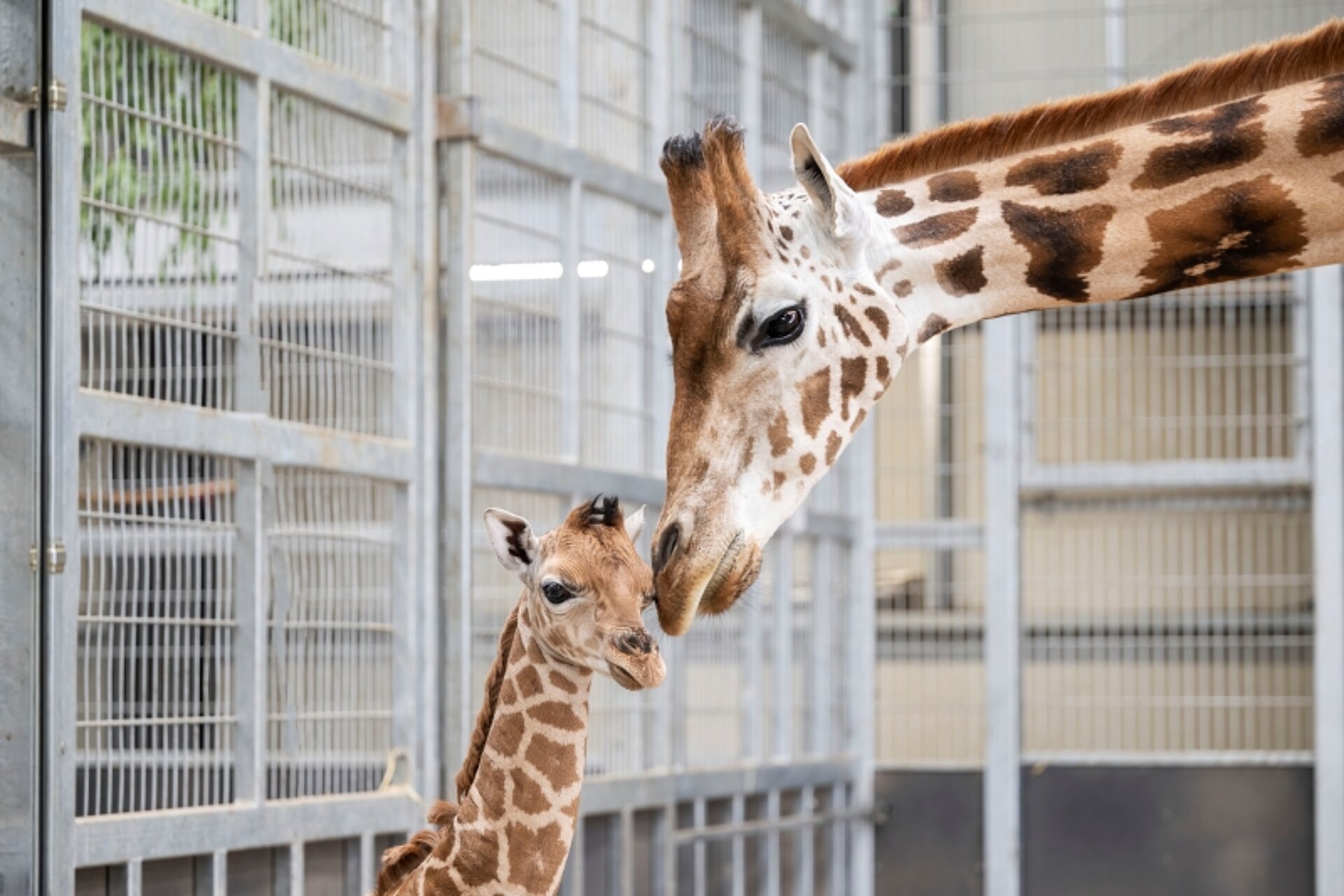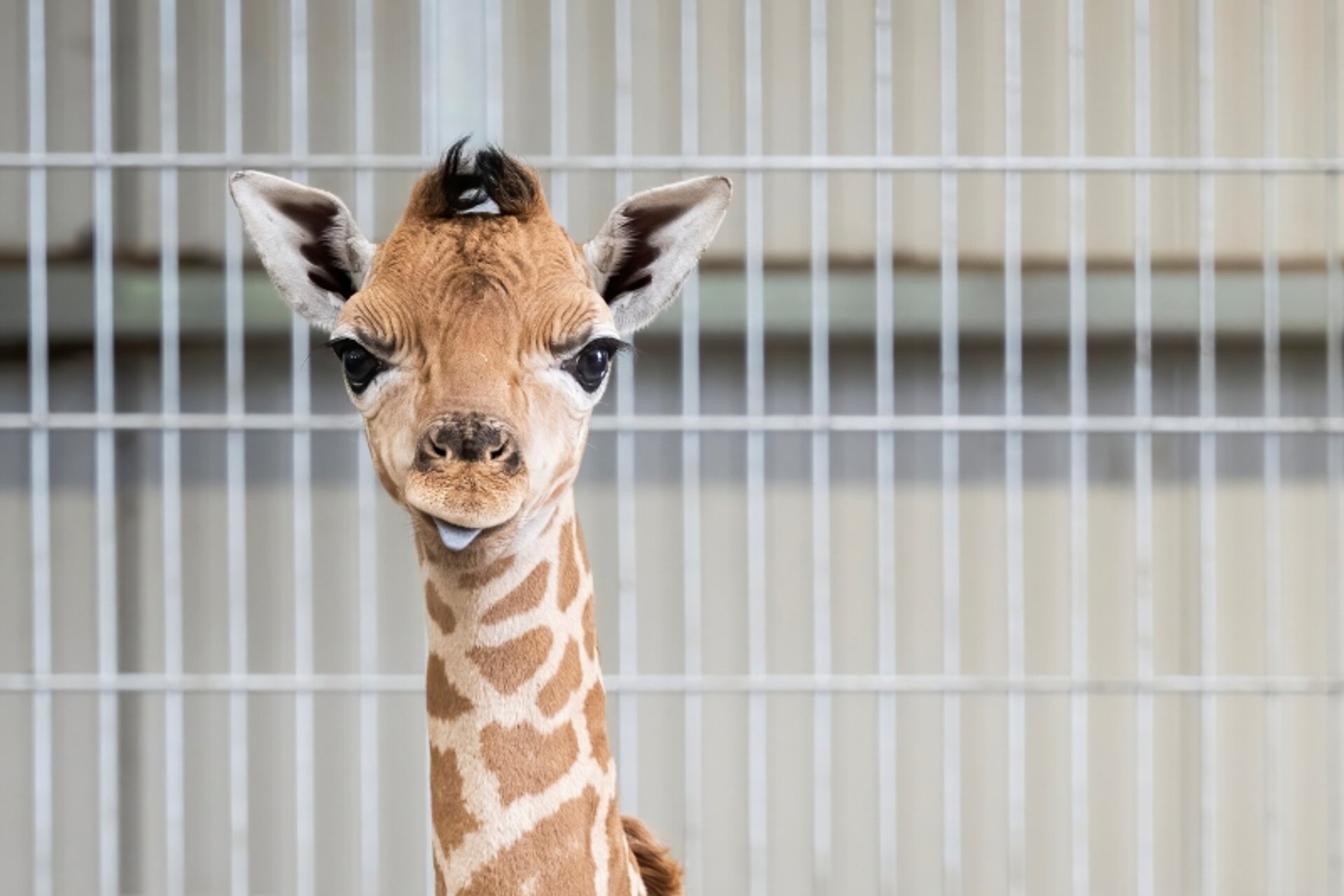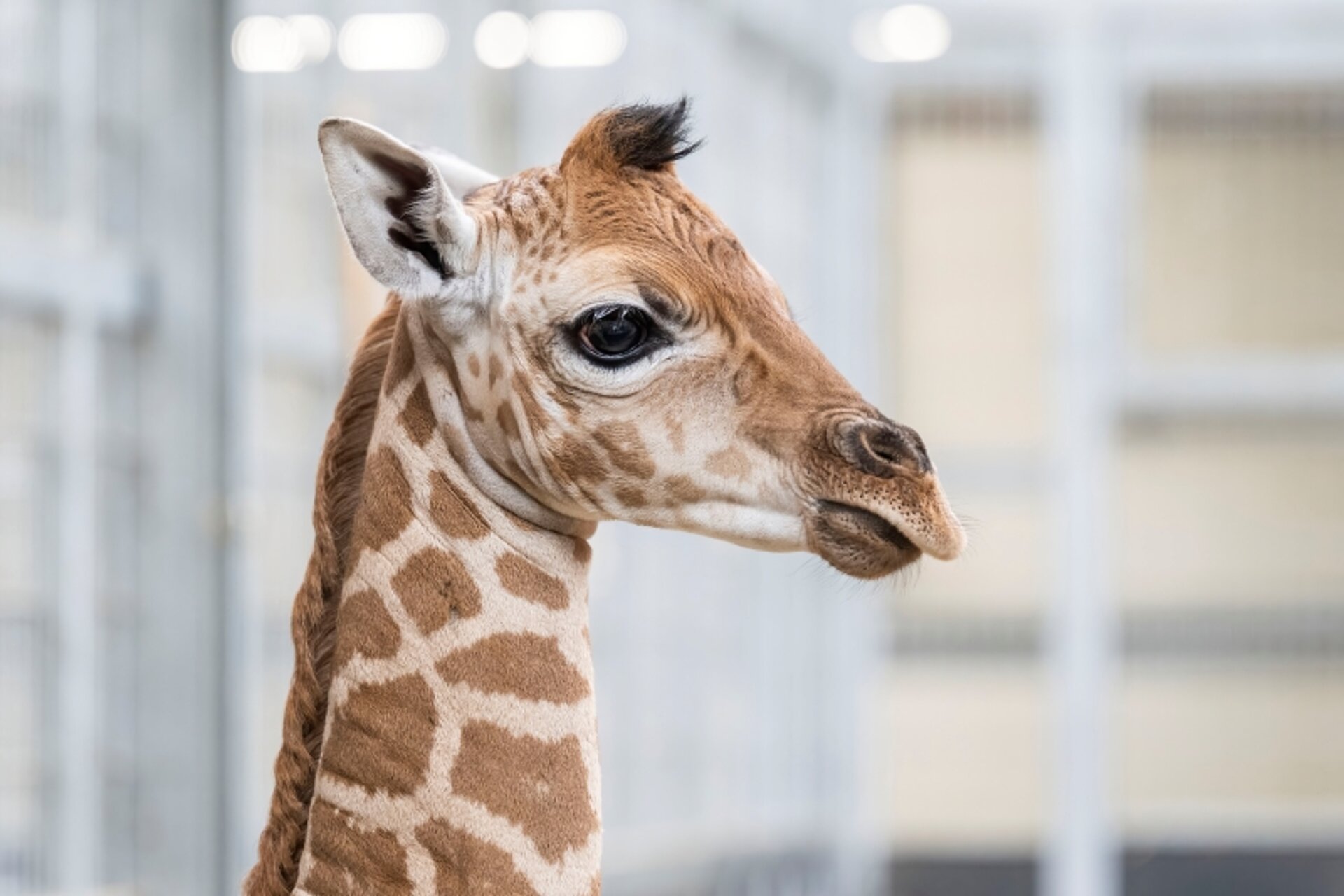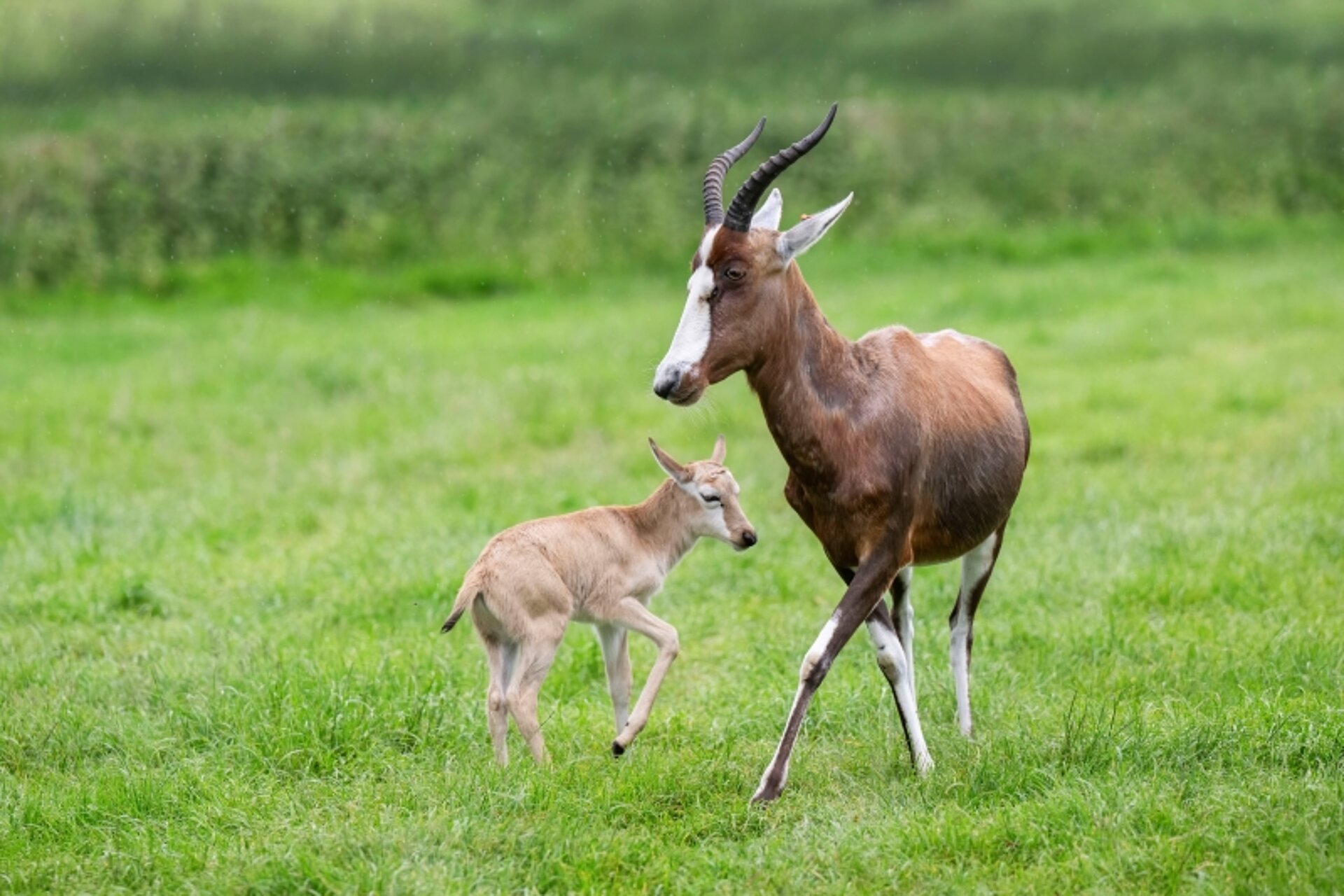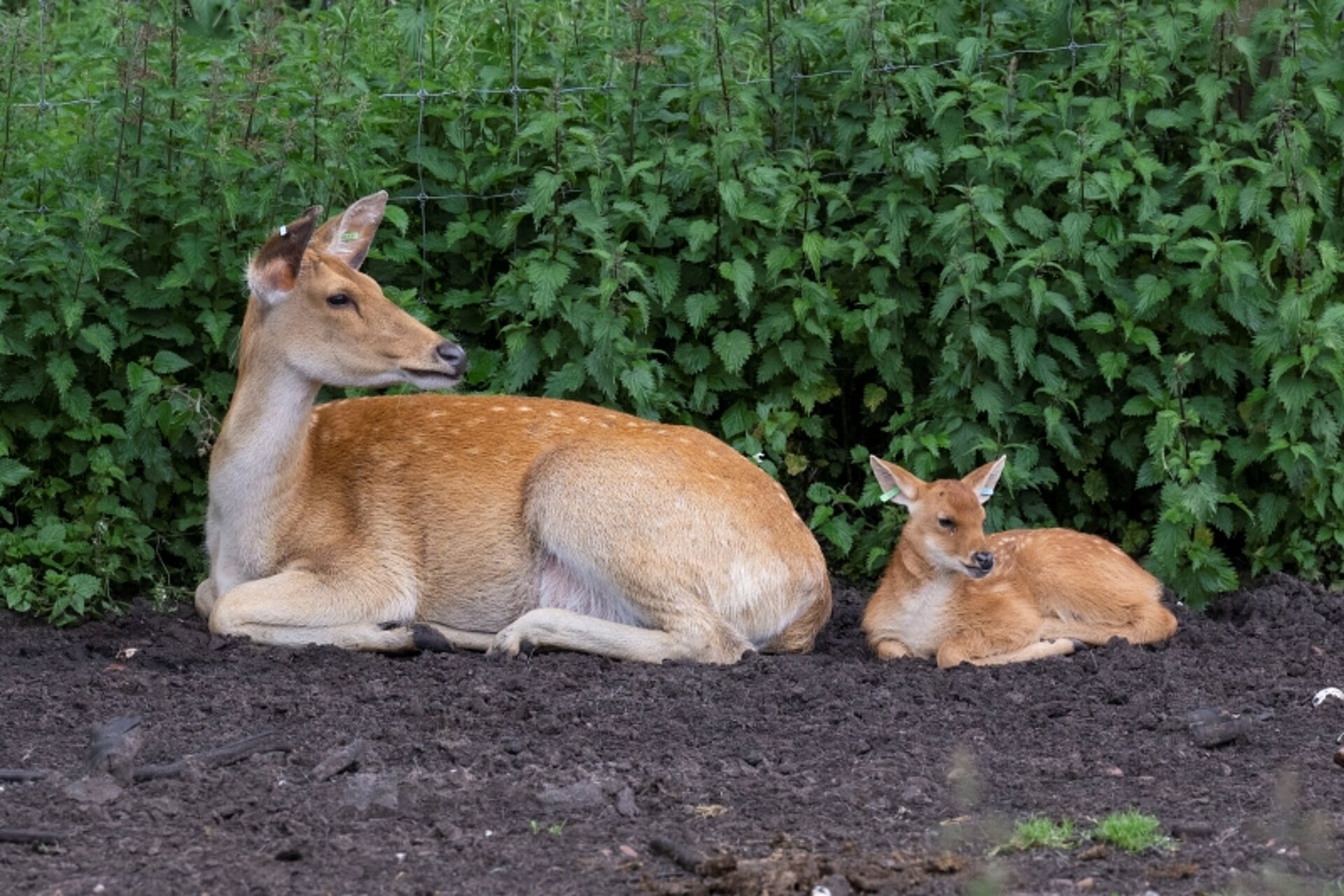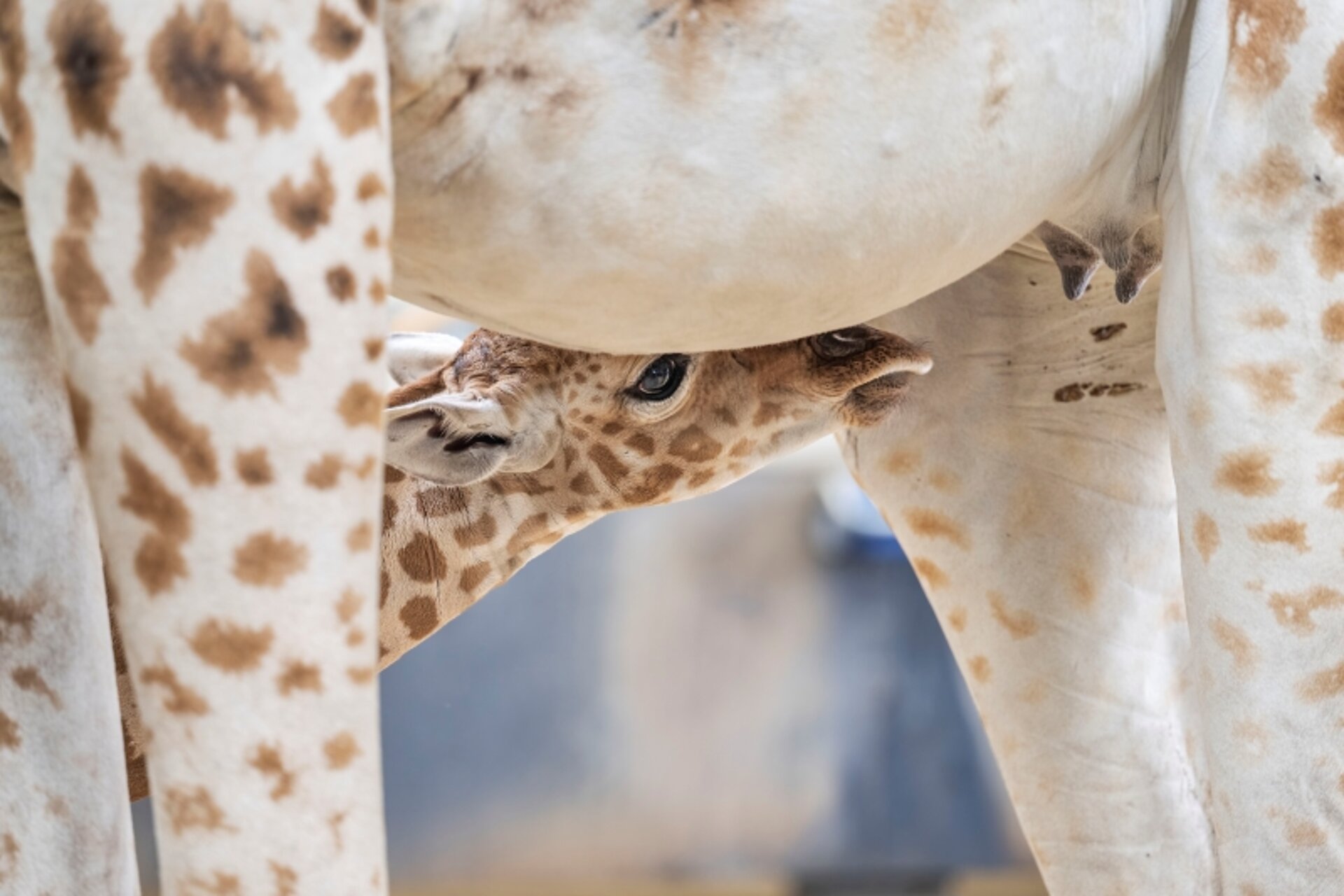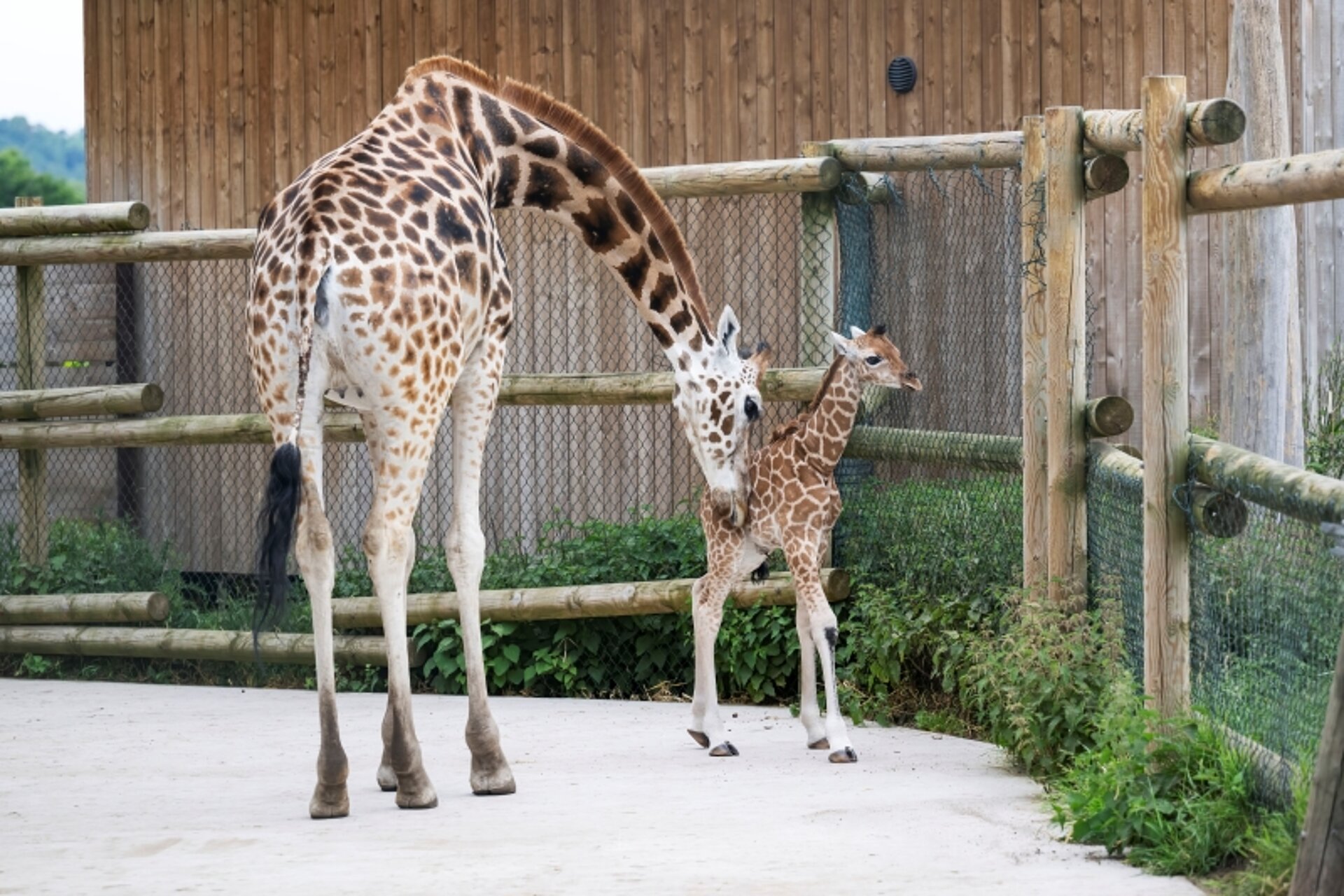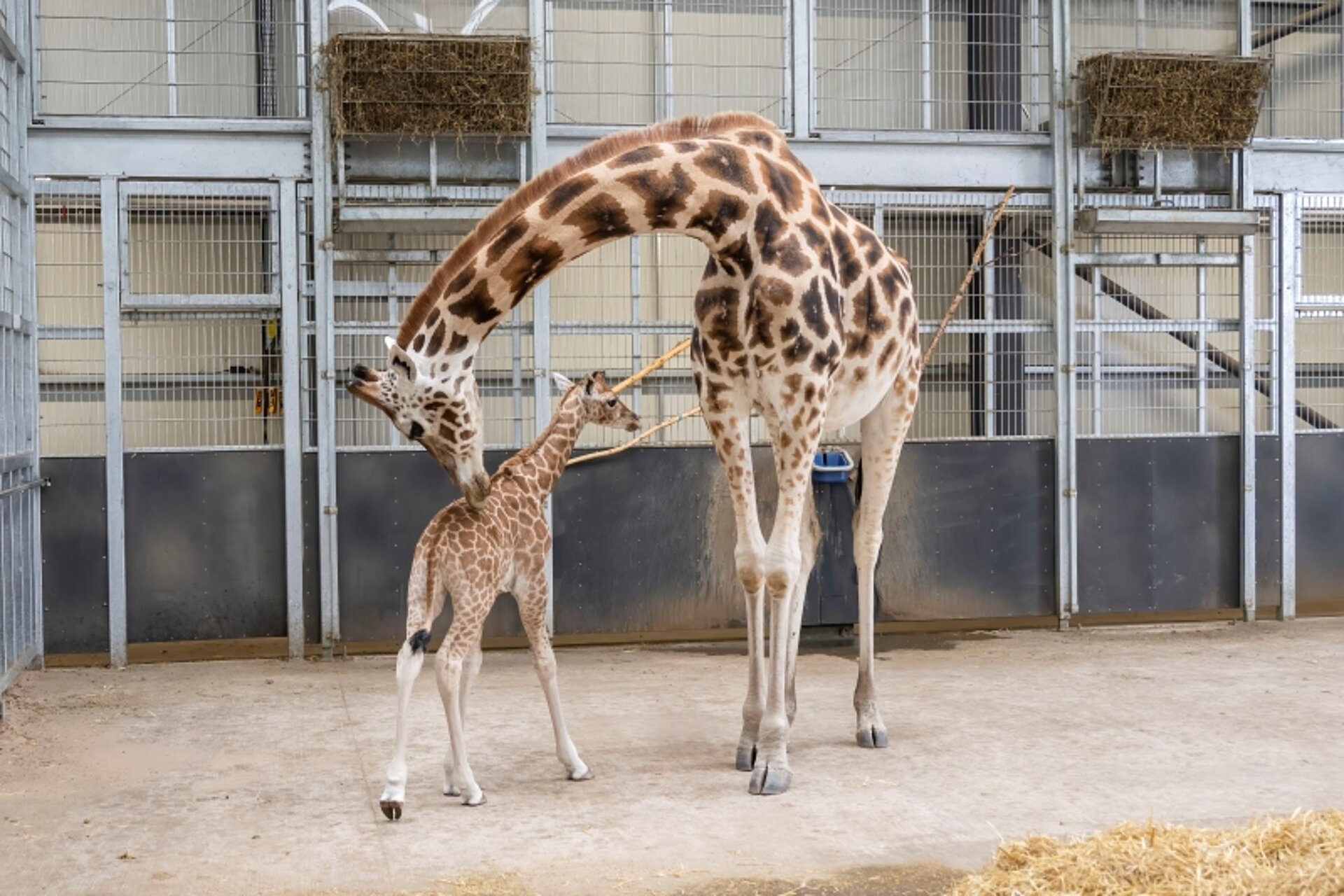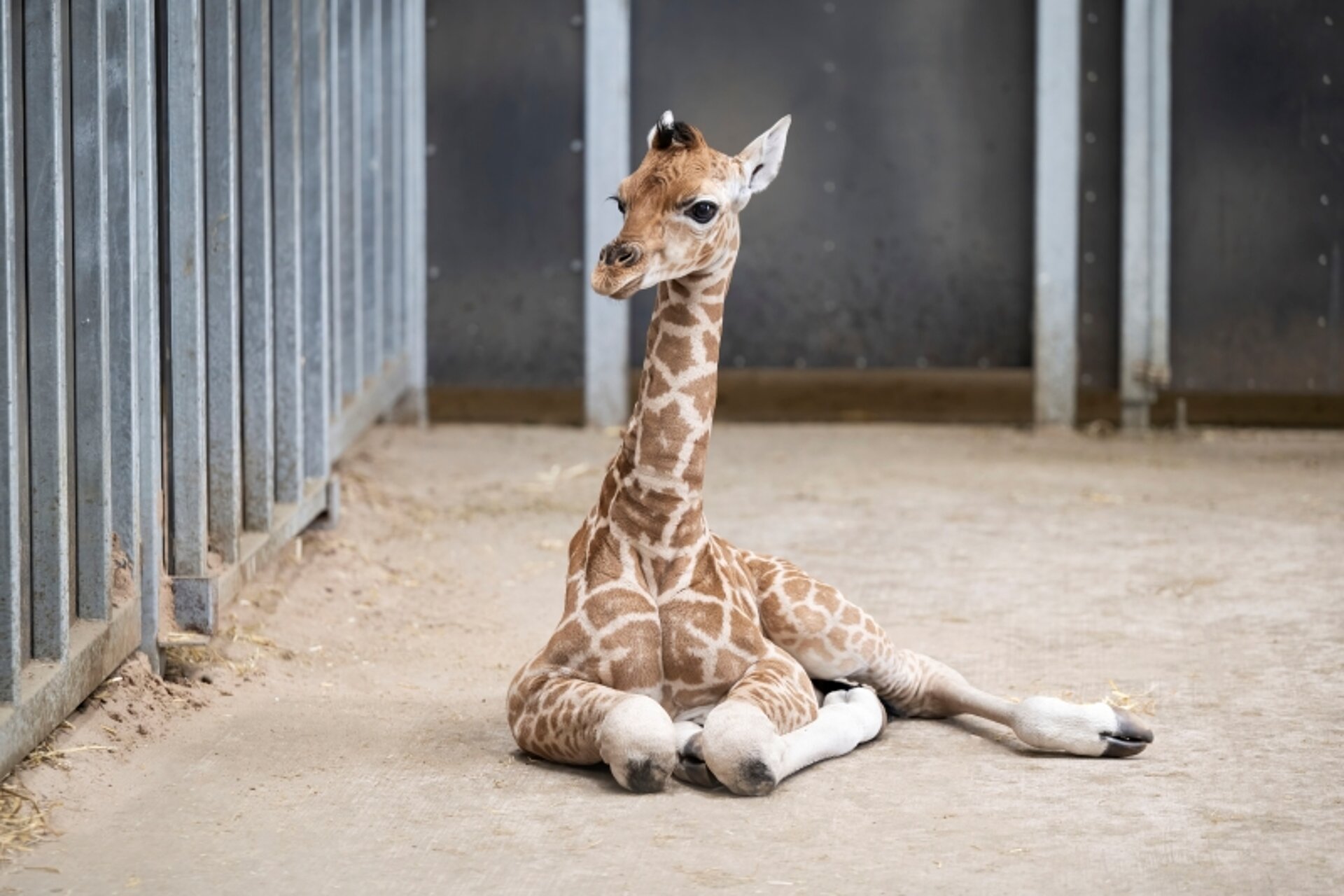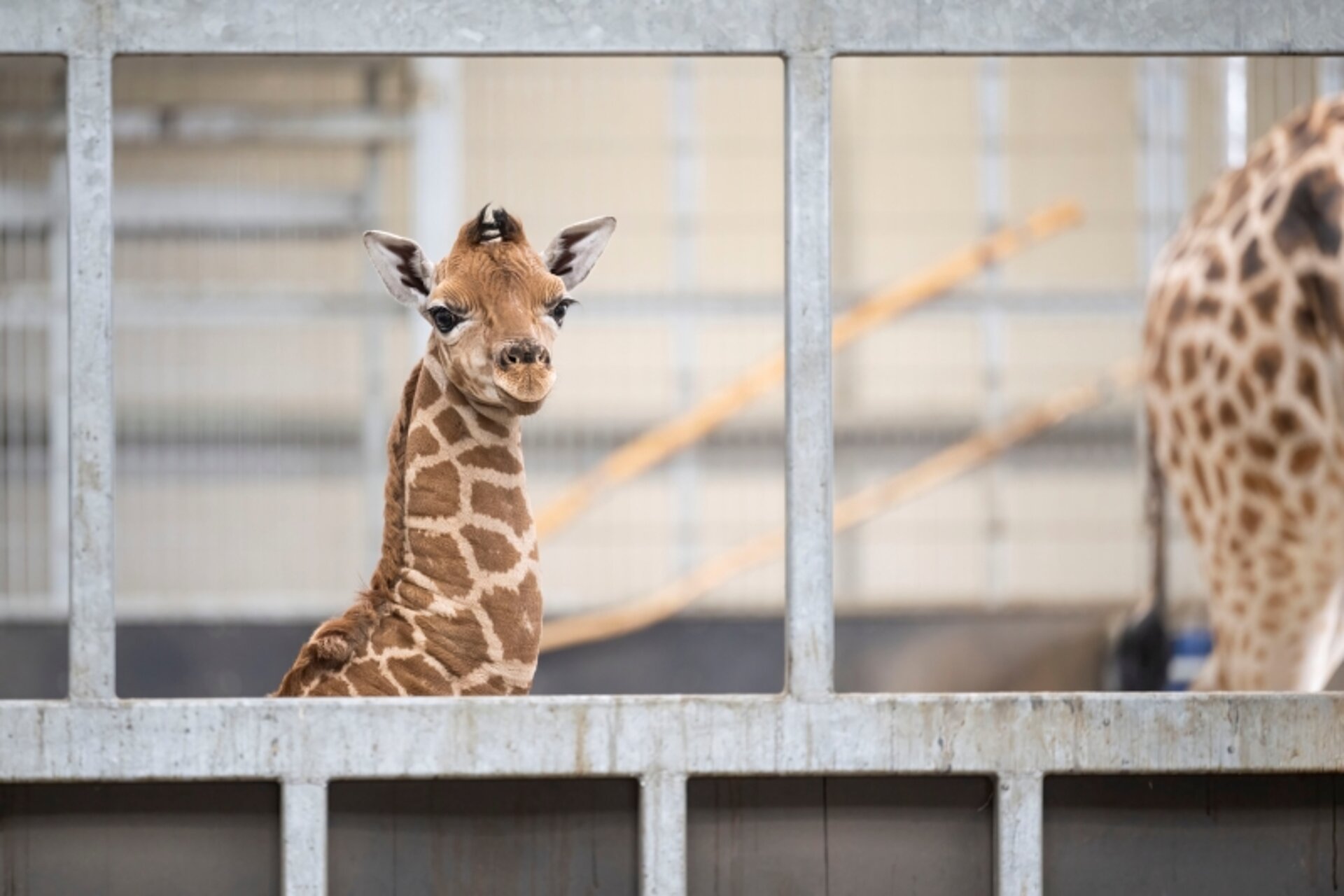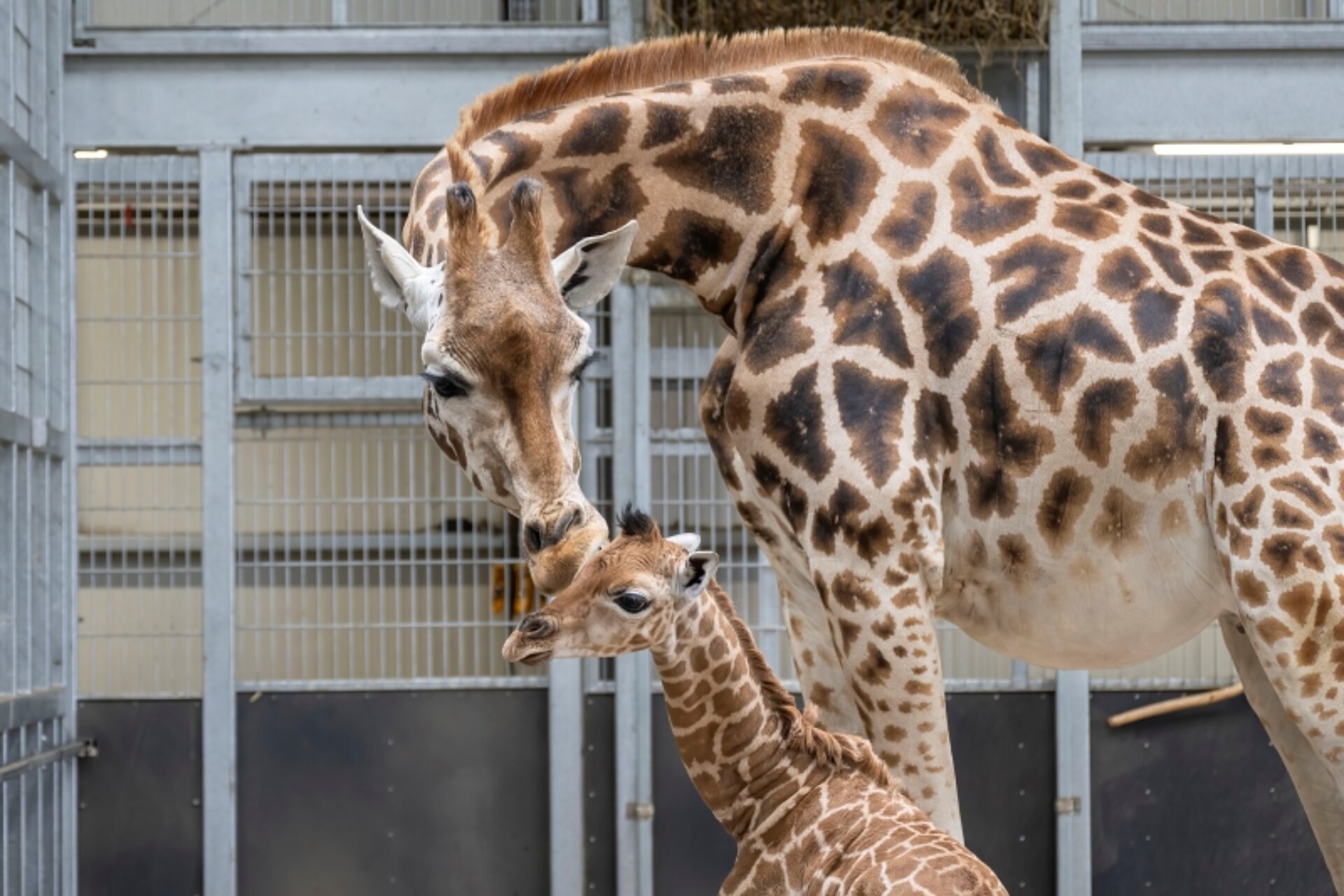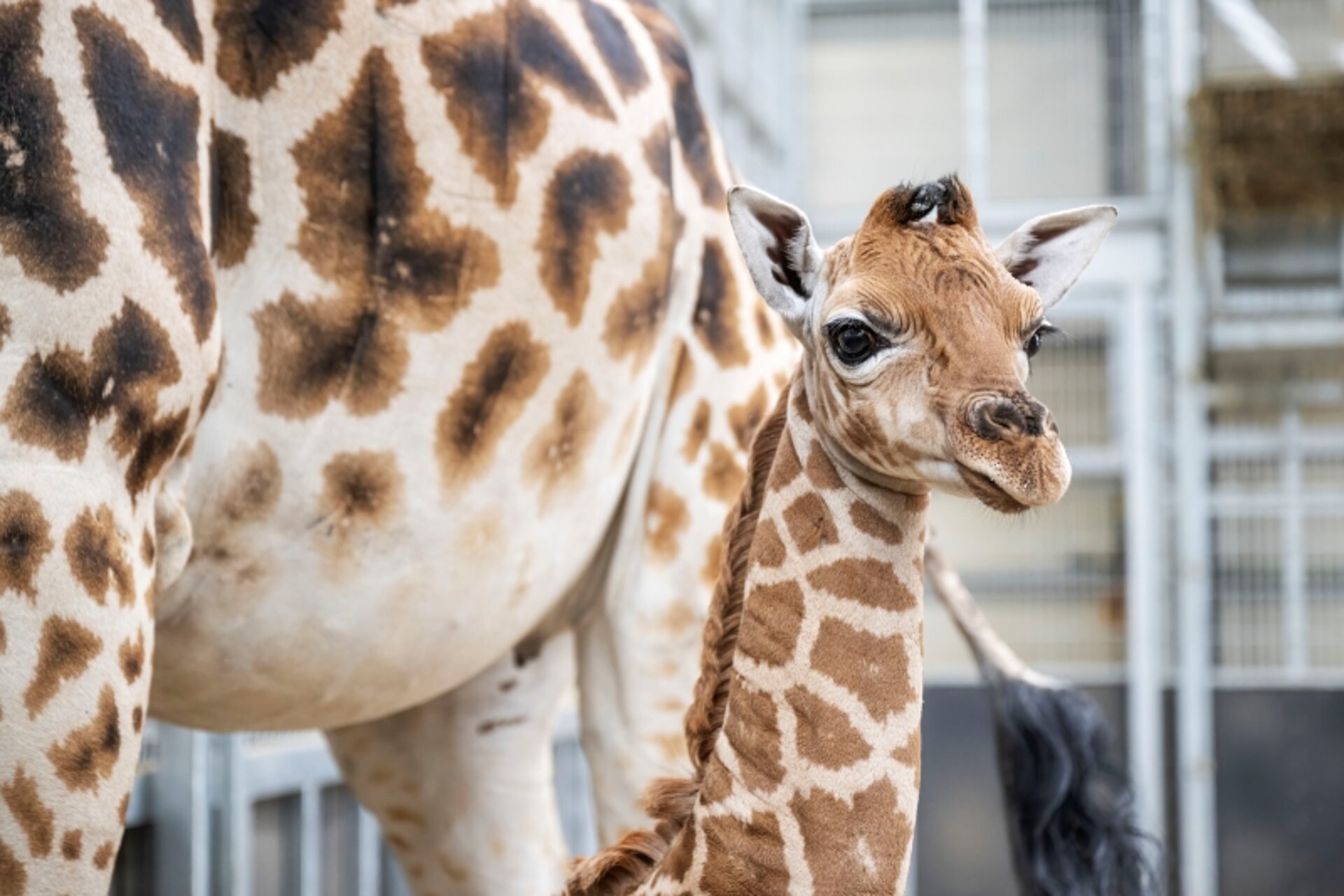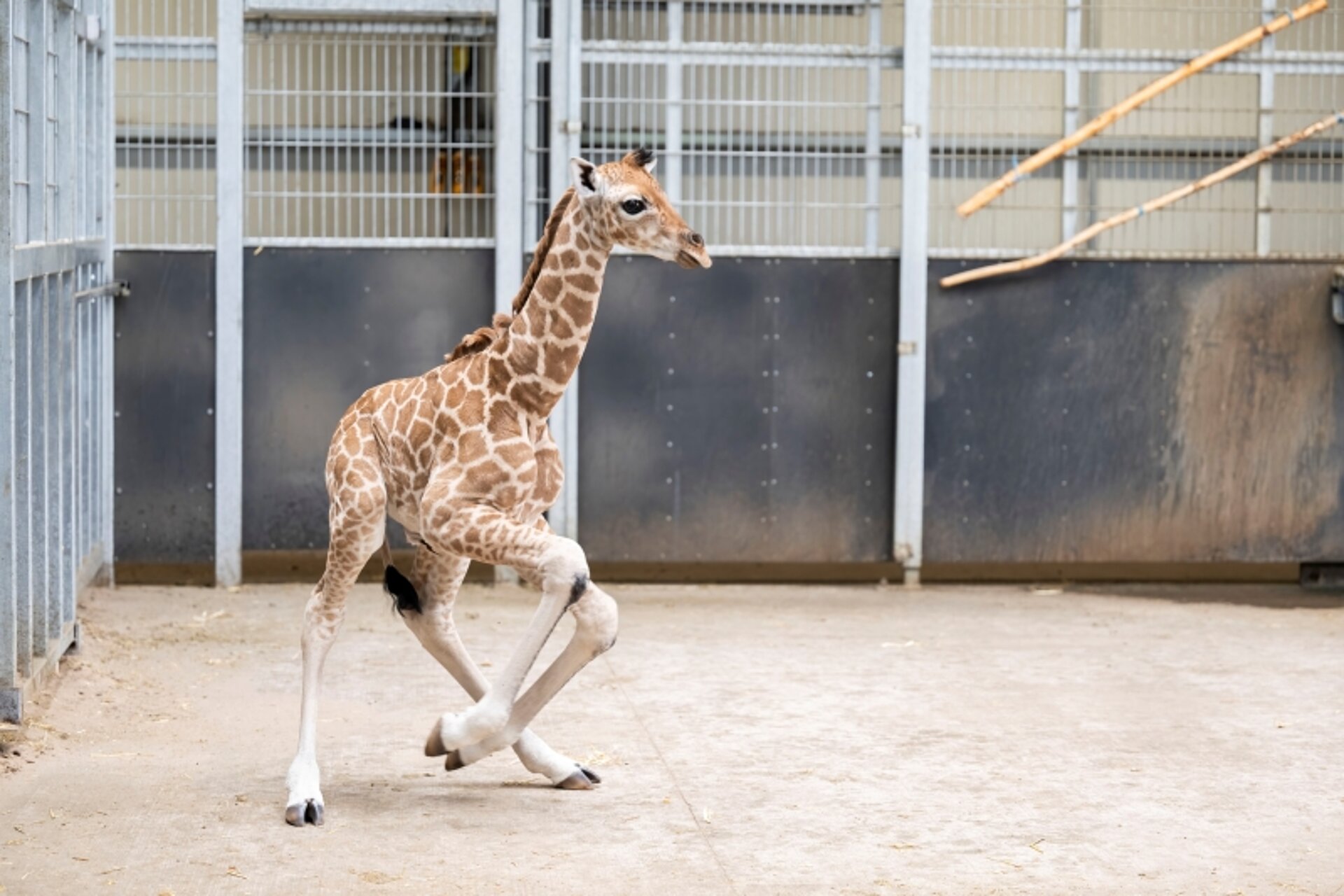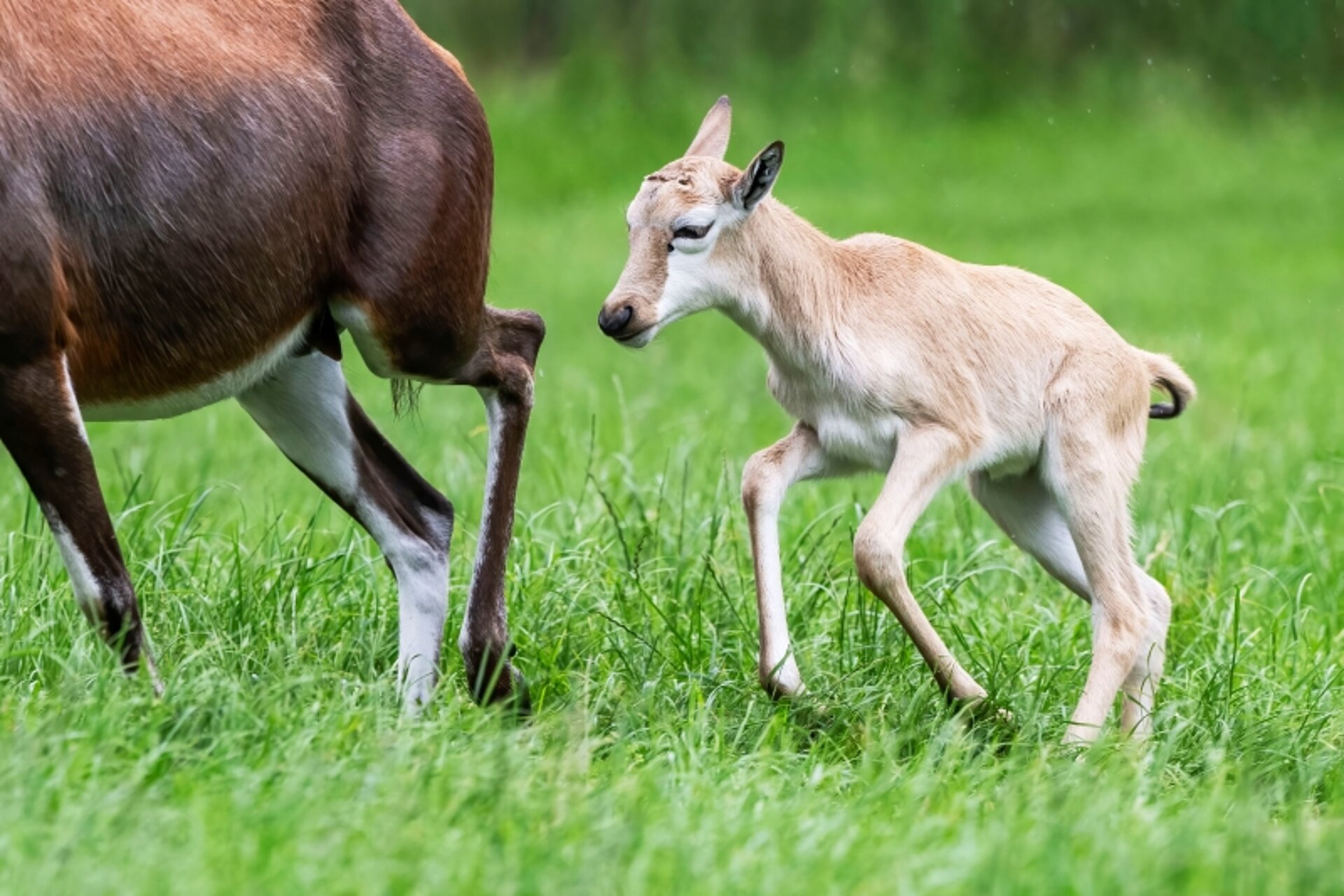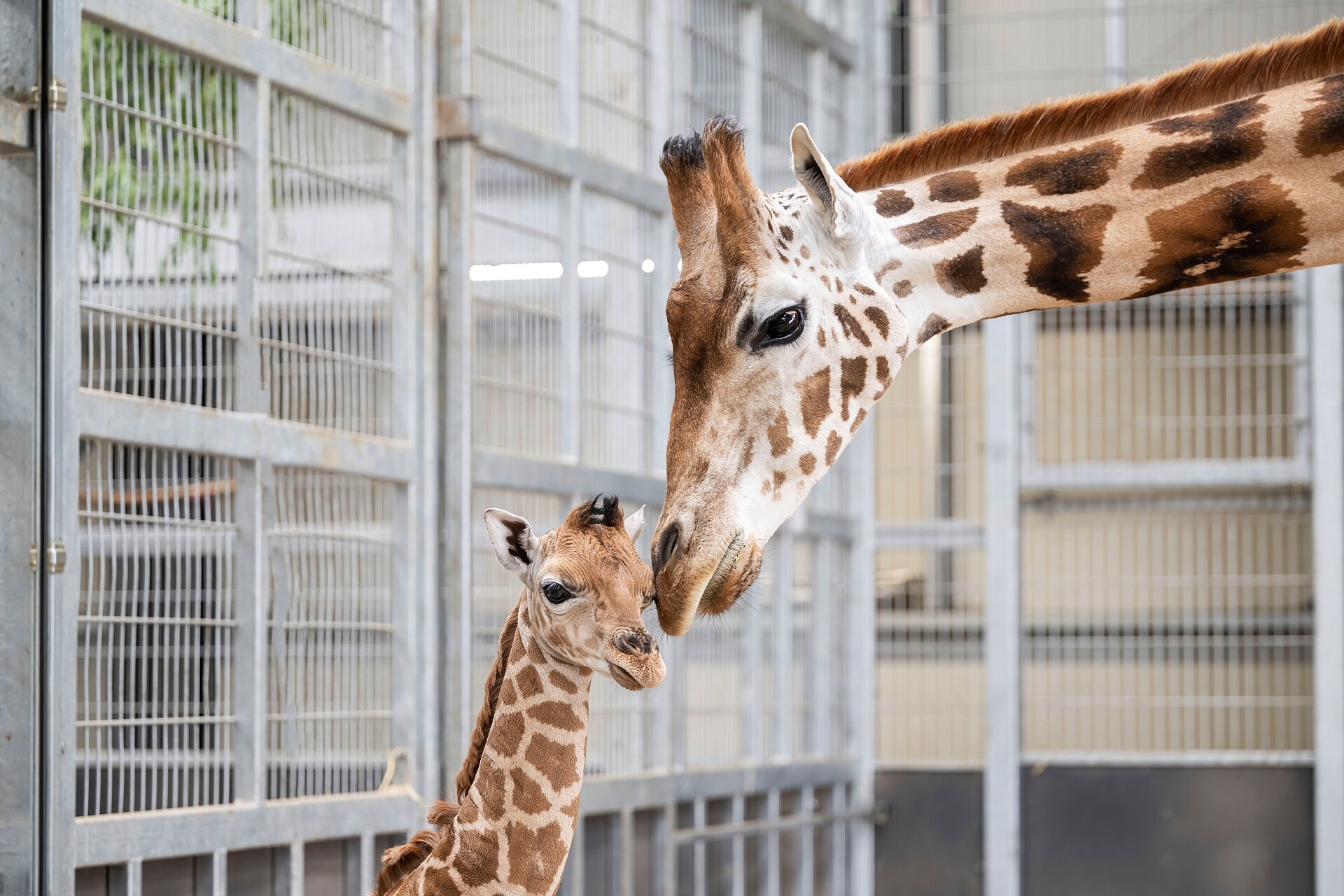
Watch the Moment a Giraffe Calf Joins our Baby Boom
The arrival of an endangered giraffe calf has been one of the latest in a flurry of animal births here at West Midlands Safari Park.
Rothschild’s giraffe, Arusha, gave birth to the six-foot-tall baby boy in the early hours of the morning on Wednesday 29 May, with the special moment being captured on CCTV.
After a gestation period of 15 months, keepers were ready for the birth and ensured that the giraffe house floor was covered with sand for a soft landing and she had her closest companion, Akacia, with her for support.
The giraffe calf is one of four new arrivals in just over a fortnight following the birth of two endangered barasingha fawns on 18 and 21 May and a blesbok calf on 1 June – the first in our history.
Deputy Head Keeper of Ungulates, Ian Nock, said, “We certainly have been busy this fortnight, as we have welcomed two female barasingha fawns to our herd and our first ever blesbok calf. We’ve named the blesbok calf ‘Merlin’ and he is sticking very close to mum, Pebbles, who is proving to be an excellent first-time mother. The barasingha fawns can often be seen playing together which is lovely for us all to see.
“Then on the morning of 29 May, the keepers and I were all extremely delighted to see that Arusha, our 12-year-old Rothschild’s giraffe, had given birth. This is her fourth calf and incredibly important for giraffe conservation. The IUCN list giraffe as ’ vulnerable’, as recent years had seen steadily declining numbers across Africa, due to poaching and habitat loss. But thanks to conservation breeding programmes in zoos and efforts in the wild to protect remaining populations, numbers have begun to slowly increase.
“Arusha is a very attentive mother, and both are doing perfectly. Once the calf is ready, we shall start introducing mother and calf to the rest of the herd, including dad, Rufus and brother, Kingsley. This important birth increases our herd to 11. It’s definitely been something of a baby boom!”
All the babies born this year will have names which start with the letter ‘M’, so the giraffe calf has been named Mtembei, which means ‘he who roams’.
All three species are part of EEPs (EAZA Ex-situ Programmes), which are collaborative breeding programmes between European zoos, aiming to conserve endangered species.
Giraffes are vulnerable to extinction, due to habitat loss from deforestation and land being converted for agriculture, as well as from poaching for their meat and skin.
Barasingha, also known as swamp deer, are also classed as ‘vulnerable’ in the wild, again due to poaching and habitat degradation in their native Nepal and India.
Blesbok were once the most abundant of African antelope species but were hunted almost to extinction in the 19th century, for their meat and skin. Protective measures were put in place and now the population has recovered so greatly, it is no longer listed as endangered.
The barasingha fawns and blesbok calf can be seen with their herds on the Safari Drive, where they share their homes with other deer and antelope species.
Mtembei the giraffe calf can currently be seen in the giraffe yard on the Safari, but will be out and about, meeting his neighbours on the Safari Drive in the next few weeks.
